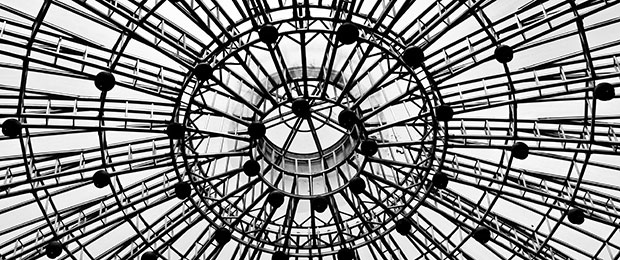In this week’s Radar Podcast episode, Jon Follett, editor of Designing for Emerging Technologies, chats with Matt Nish-Lapidus, partner and design director at Normative. Their discussion circles around the evolution of design, characteristics of post-Industrial design, and aesthetic intricacies of designing in networked systems. Also note, Nish-Lapidus will present a free webcast on these topics March 24, 2015.
Post-Industrial design relationships
Nish-Lapidus shares an interesting take on design evolution, from pre-Industrial to post-Industrial times, through the lens of eyeglasses. He uses eyeglasses as a case study, he says, because they’re a piece of technology that’s been used through a broad span of history, longer than many of the things we still use today. Nish-Lapidus walks us through the pre-Industrial era — so, Medieval times through about the 1800s — where a single craftsperson designed one product for a single individual; through the Industrial era, where mass-production took the main stage; to our modern post-Industrial era, where embedded personalization capabilities are bringing design almost full circle, back to a focus on the individual user:
“Once we move into this post-Industrial era, which we’re kind of entering now, the relationship’s starting to shift again, and glasses are a really interesting example. We go from having a single pair of glasses made for a single person, hand-made usually, to a pair of glasses designed and then mass-manufactured for a countless number of people, to having a pair of glasses that expresses a lot of different things. On one hand, you have something like Google Glass, which is still mass-produced, but the glasses actually contain embedded functionality. Then we also have, with the emergence of 3D printing and small-scale manufacturing, a return to a little bit of that artisan, one-to-one relationship, where you could get something that someone’s made just for you.
“These post-Industrial objects are more of an expression of the networked world in which we now live. We [again] have a way of building relationships with individual crafts-people. We also have objects that exist in the network themselves, as a physical instantiation of the networked environment that we live in.”
Beyond the object, back to the user
This movement toward personalization and personalized services is affecting post-Industrial design in a number of ways. Nish-Lapidus talks about this growing complexity and how it affects design considerations:
“There’s a lot of new kinds of complexity that you have to think about when producing something, even if that thing is just a physical object with no inherent functionality or technology built into it. Means of production have changed quite a bit, so the options are much more vast than they used to be, but the scales are very different. You have the ability to kind of micro-produce things, but also to produce single one-off things, so the designer in this case has to go back to thinking about the individuals or small subsets of people that the product serves.
“Then when we get into embedded technology and objects that actually are part of the network infrastructure, it’s not just about the physical object anymore. The object becomes a container for software, and that software can do things that are invisible and that affect all sorts of other aspects of the environment and [the user’s] relationship with the objects and with the other people that that object puts them in touch with.”
How it feels to be inside of a complex system
Nish-Lapidus also outlines a set of aesthetic qualities of networked systems for designers to use not only as foundational elements for designing objects within a network, but to better describe and understand the network itself. Using “texture” as an example, he explains:
“This whole idea comes from a tradition of design foundations, which has been established for quite a while and is much more commonplace in industrial design and graphic design and architecture, where there are physical properties of objects that you have to understand in order to be able to make something with them. When we get into designing software and networked things, where the physical limitations are a little different, and the material properties become much more abstract, we haven’t yet done a really great job of thinking about the aesthetics of those types of material properties, those invisible properties. What’s interesting about invisible properties is that they quickly become visible when you’re trying to interact with the system at hand.
“Taking texture as the first one, for example, texture is looking at the way the system connects to all of the other pieces that exist within it, or how those pieces interact with each other. When you have a system that has multiple nodes, and those nodes could be human or inhuman or physical objects or pieces of software, how does the communication between those happen? … When you start to talk about that in terms of a texture of connection, you can look at how obvious the connections are. If they’re really obvious and easy, and you can access them, and you understand what you’re supposed to put in them or what you’re going to get out of them, you could talk about that as a ‘smooth’ form of communication. If it’s really confusing, or you get something unexpected, or there’s interference from other aspects of the system, you could start talking about that as rough or as other types of descriptors. This gives us a kind of a fuzzy aesthetic language to start talking about how it feels to be inside of a complex system.”
You can listen to the podcast in the player embedded above or download it through TuneIn, SoundCloud, or iTunes.
Cropped image on article and category pages by Natesh Ramasamy on Flickr, used under a Creative Commons license.

